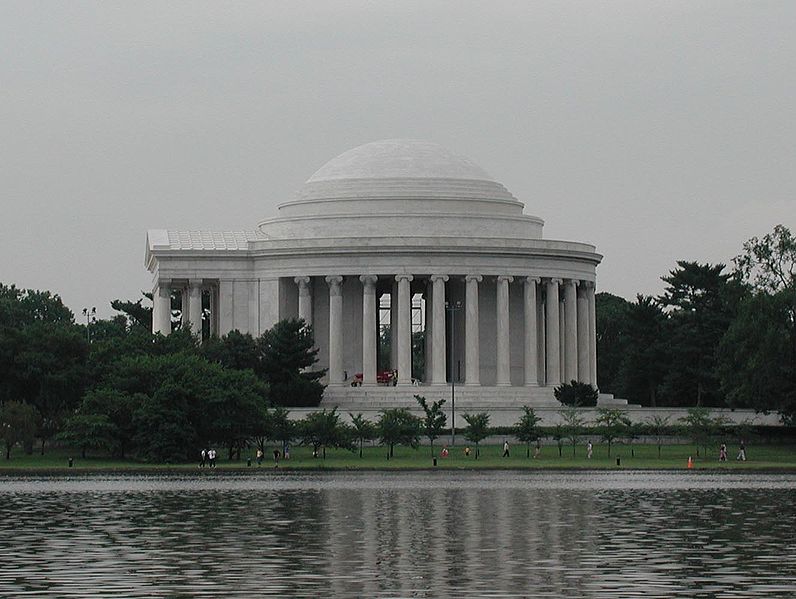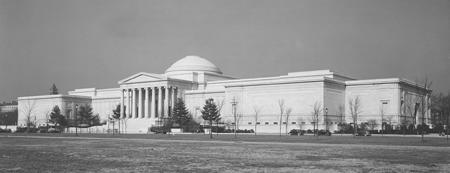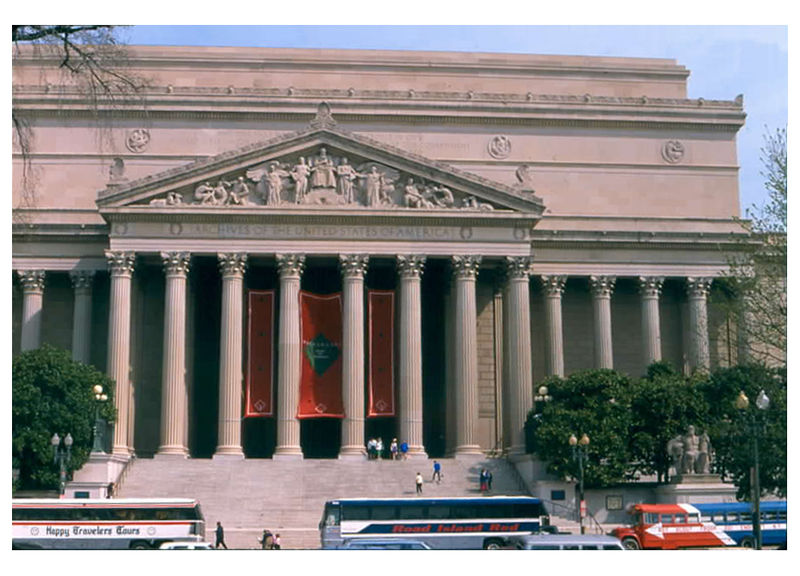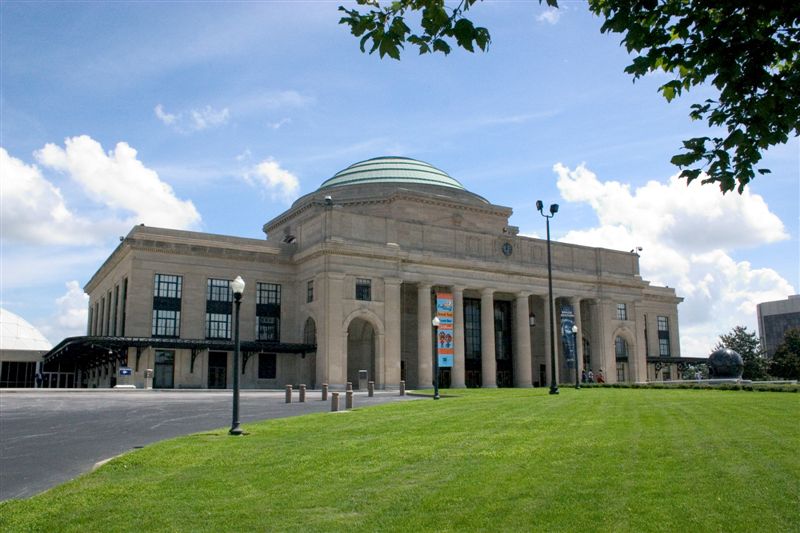<Back to Index>
- Mathematician Oscar Zariski, 1899
- Architect John Russell Pope, 1874
- Chef de l' État Français Philippe Pétain, 1856
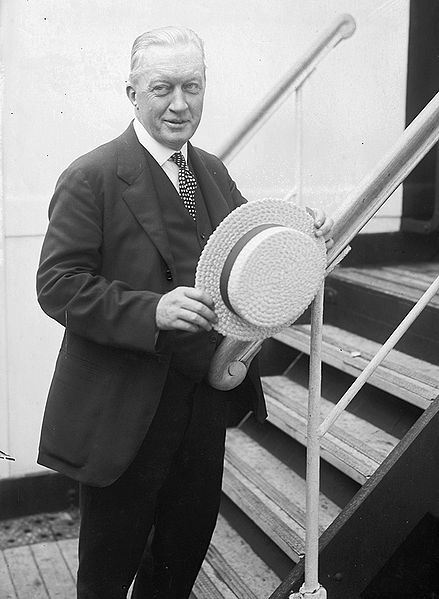
John Russell Pope (April 24, 1874 – August 27, 1937) was an architect most known for his designs of the National Archives and Records Administration building (completed in 1935), the Jefferson Memorial (completed in 1943) and the West Building of the National Gallery of Art (completed in 1941) in Washington, DC.
Pope was born in New York in 1874, the son of a successful portrait painter. He studied architecture at Columbia University and graduated in 1894. He received a scholarship to attend the newly-founded American Academy in Rome, a training ground for the designers of the "American Renaissance." Pope travelled for two years through Italy and Greece, where he studied and sketched and made measured drawings of more Romanesque, Gothic, and Renaissance structures than he did of the remains of ancient buildings. Pope was one of the first architectural students to master the use of the large-format camera, with glass negatives. Pope attended the École des Beaux-Arts in Paris in 1896, honing his Beaux-Arts style, returning to New York in 1900, to spend a few practical years in the office of Bruce Price before opening a practice.
Throughout his career, Pope designed private houses (including for the Vanderbilt family), and other public buildings besides the Jefferson Memorial and the National Gallery, such as the massive Masonic House of the Temple (1911 - 1915), also in Washington, and the triumphal-arch Theodore Roosevelt Memorial at the American Museum of Natural History in New York City. In 1919 he provided a master plan for the future growth of Yale University, one that was significantly revised by James Gamble Rogers in 1921 with more sympathy for the requirements of the city of New Haven, Connecticut, but which kept the Collegiate Gothic unifying theme offered by Pope. Pope's original plan is a prime document in the City Beautiful movement in city planning.
Pope's designs alternated between revivals of Gothic, Georgian, eighteenth-century French, and classical styles. Pope designed the Henry E. Huntington mausoleum on the grounds of The Huntington Library and later used the design as a prototype for the Jefferson Memorial in Washington, D.C. The Jefferson Memorial and the National Gallery of Art were both neoclassical, modelled by Pope on the Roman Pantheon.
Lesser known projects by Pope include Union Station, Richmond, Virginia (1919), with a central rotunda capped with a low saucer dome, now housing the Science Museum of Virginia; Branch House (1917-1919), a Tudor-style mansion also in Richmond (the John K. Branch house, 1919) that now houses the Virginia Center for Architecture ; Baltimore Museum of Art; and in Washington, D.C. the National City Christian Church, Constitution Hall, American Pharmacists Association Building, Ward Homestead, and the National Archives Building. In Milwaukee, Wisconsin he provided a severe neo-Georgian clubhouse for the University Club (1926) and in Oneonta, New York he designed the first building for Hartwick College (Bresee Hall) which was constructed in 1928. He designed additions to the Tate Gallery and British Museum in
London, an unusual honor for an American architect, and the War
Memorial at Montfaucon, France. Pope was also responsible for extensive
alterations to Belcourt, the Newport residence of Oliver and Alva Belmont. The Georgian Revival residence he built for Thomas H. Frothingham in Far Hills, New Jersey in 1919 now houses the United States Golf Association Museum.
In
1991 an exhibition at the National Gallery of Art, "John Russell Pope
and the Building of the National Gallery of Art" spurred the
reappraisal of his work, which had been scorned and derided by many
critics influenced by International Modernism.
